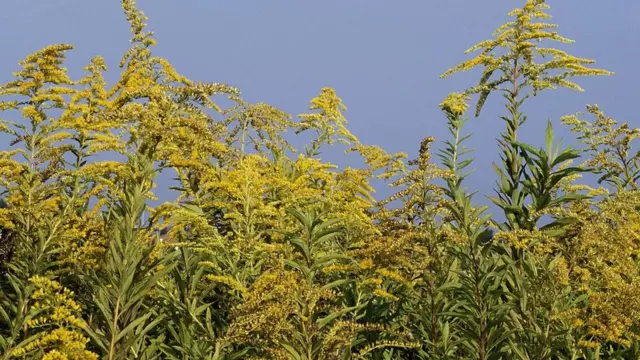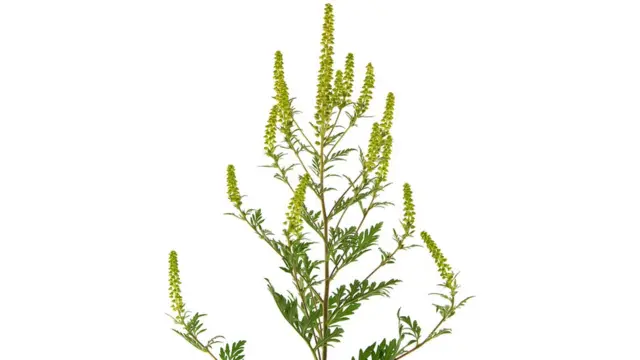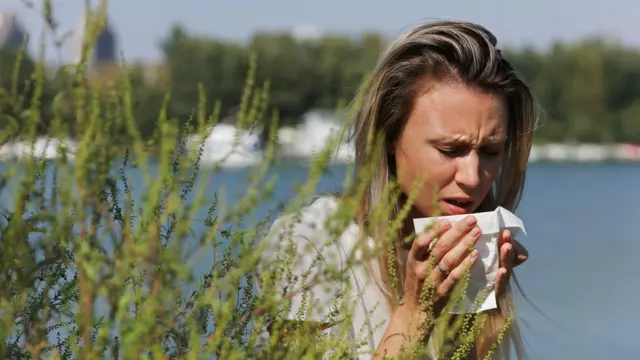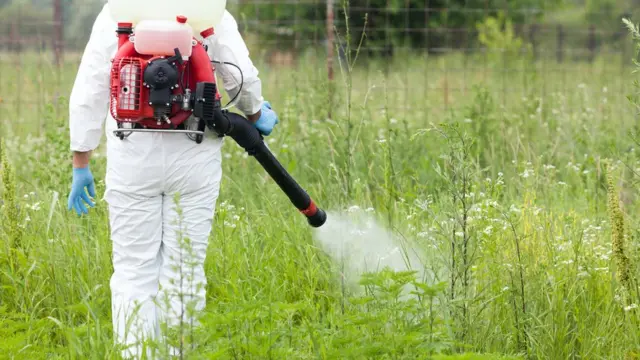Ambrosia, although it has a name associated with something nice and sweet, is actually one of the biggest enemies of allergy sufferers. This plant, known for its aggressive ability to reproduce and spread, has become a serious problem in Ukraine and many other countries.
During the mass flowering of ragweed, not only the frequency of allergies increases, but also the number of publications about it. But often false information about ragweed appears even at the level of definition.
An image search for "ambrosia" among the first 20 photos gave me 7 false photos that did not smell of ambrosia.
Most often, it is confused with the Canadian goldenrod.

Photo by DEA / C.DANI / I.JESKE
This species has prominent yellow flowers and entire leaves that easily distinguish it from ragweed. It is also often suspected of having allergy symptoms, but most often in vain - the heavy pollen of this plant is not easily transported by the wind, and therefore it has very little chance of getting on the mucous membranes of people.
Where did ragweed come from?
Ambrosia artemisiifolia (Ambrosia artemisiifolia) came to us from North America, which is its homeland. However, it has now spread to the rest of the continent, as well as Central and South America. Its invasion covered Europe, Asia, and even Australia.
It is believed that ambrosia came to Europe in 1873. Most likely, she traveled as a "hare" in cargoes of red clover seeds and other agricultural crops. This marked the beginning of a triumphant march of resettlement to new spaces.
Its wild populations began to be recorded in Germany, and later in France, Great Britain, the Netherlands and Belgium. Later, ragweed also opened the eastern front, gradually penetrating the flora of Serbia, Croatia, and Hungary without stopping.
This alien has been registered on the territory of Ukraine since the beginning of the last century. It could have gotten here not only by chance - it was even specially grown here.
In 1914-1918, there was a center of ambrosia cultivation within the current Dnipropetrovsk region. The German pharmacist Krikker tried to use the plant as a medicine - a substitute for quinine and as an anthelmintic.
For a long time, the distribution of the species in Ukraine was limited to a small area. Everything was changed by the Second World War, which caused an explosive spread of many foreign species. This happened due to the mass movement of people, goods and damage to vegetation.
Success strategy
Ambrosia has all the prerequisites for the development of areas with destroyed vegetation. An average plant produces 30-40 thousand seeds, and some specimens can produce 100 thousand.

Photo credit: Getty Images
Not all of them germinate for the next season - some are kept in reserve, forming a seed bank. These "investments" are reliably stored in the soil for up to 10 years, but there are known experimental confirmations of seed germination after 40 years in a state of rest.
Consequences of the invasion
Mass development of ragweed changes the structure of vegetation. Not only does the plant multiply quickly, but also the ambrosia uses environmental resources much more efficiently than other plants. This has extremely sad consequences, both for the native species and for the soil, because it dries up and becomes poorer.
In addition, ragweed effectively shades the plants that grow nearby, making life difficult for them. As a result, the vegetation we are used to is changing, the temperature of the soil and surface air is rising, and erosion is occurring.
Ambrosia creates a danger not only for the microclimate and aesthetics of cities and villages, but also for the preservation of rare habitats and plants. This plant, if the crops are treated incorrectly, can spread to them in such a way that the yield will be reduced several times.
But there is an even more serious effect on a person. From mid-July until the first frosts, ragweed blooms en masse and causes severe allergies.
There is no hiding from ambrosia
One plant can produce from 4 million to 10 billion pollen grains. They easily spread through the air for tens of kilometers. Pollen was recorded at an altitude of 5,000 m above sea level and at a distance of up to 160 km from the nearest place where ragweed grows.
That is, sometimes you can experience allergic manifestations from this plant, even if it does not grow in your city or village. Here's who works well even remotely!

Photo credit: Getty Images
Allergic reactions in our body are caused by proteins contained in ragweed pollen. 11 of them are known, but the main ones are Amb a 1 (allergen E) and Amb a 2 (allergen K).
When ragweed pollen gets on the mucous membrane of the nose and bronchi, these compounds provoke an immune reaction, which leads to lacrimation, increased body temperature, acute inflammation of the mucous membranes of the upper respiratory tract, which can cause attacks of bronchial asthma.
The painful condition caused by ragweed is often accompanied by fatigue, increased irritability, decreased appetite, depression and headache attacks.
There are studies that show that increasing levels of carbon dioxide and nitrogen compounds, as well as warming, further increase the allergenicity of pollen.
To protect yourself, vulnerable people should limit contact with pollen during mass flowering. This will help with respirators and medical masks, avoiding places with significant growths of ragweed (wastelands, construction sites, roadsides and railways), closed car windows when traveling in landscapes with possible growth of the plant.
And in periods when the concentration of pollen is the highest, it is even worth closing the windows of the apartment.

Photo credit: Getty Images
It is best to consult a family doctor about how to treat allergic syndrome.
Is it possible to fight ragweed?
Fighting ragweed is extremely difficult, because from the very beginning its mass distribution was missed.
One of the options is to plant the affected land with winter cereals for a short time, because the North American host is much more active in spring cereal crops.
You can fight ragweed with chemical methods, but only on limited areas.
Where to start the fight against ragweed? People should be encouraged to find and report on its centers in cities and villages.
Ambrosia thickets should be mowed twice a season: in the period before flowering and a month after. It cannot be mowed in May-June and in the dry season without watering.
Ambrosia can be destroyed mechanically - simply by pulling out the root. It is especially effective if the plant grows around administrative buildings, kindergartens, schools, and on the territory of recreational areas.

Photo credit: Getty Images
And in order for ragweed not to take over Ukraine, it is necessary to restore the plant cover where it is destroyed or damaged. These are areas along the construction of new highways, wastelands, areas with displaced soil, etc.

